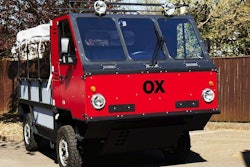When you view the 2014 Chevrolet Silverado and GMC Sierra side-by-side with the 2013 models, one of the first things you notice is that they look bigger. There’s more bulk in their new front-end designs.
So it might come as a surprise to hear that these new trucks are actually more aerodynamic than their sleeker predecessors. What looks like bulk is actually attention to detail by the company’s designers.
General Motors recently detailed the painstaking aerodynamic engineering process that went into improving fuel efficiency and interior quietness on the new models. According to GM, the 2014 models spent more time in development in the company’s 750-foot-long wind tunnel than any GM pickups before them.
GM says aerodynamic performance engineers like Diane Bloch “examined every millimeter” of the trucks to improve aerodynamic performance. And along the way, the company says it has debunked a few myths about aerodynamics as well.
In crude terms, GM’s wind tunnel is a long tunnel with a very large fan at one end, powerful enough to generate winds up to 138 mph. The path that the wind takes around the car is highlighted by what looks like smoke in the pictures provided here by GM.
“We can’t stop air; we can only guide it through the path of least resistance. It’s like electricity, without the shock,” Bloch said in a prepared statement. “The biggest misconception is that it’s all about single components. But a certain side mirror design doesn’t create a certain amount of drag, its interaction with the rest of the vehicle does.”
The biggest myth GM addressed is whether or not a raised or lowered tailgate helps or hurts aerodynamics, and therefore fuel consumption. Contrary to popular opinion, Block says a tailgate in the upright position actually creates less drag on the truck. According to GM, “As air flows over the truck, it falls over the cab and pushes forward on the rear of the truck. With the tailgate down, the benefits of that airflow are diminished.”









